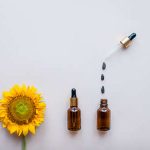1. Understanding Post-Treatment Skin Needs
After undergoing popular cosmetic procedures like laser treatments, chemical peels, or microneedling, many Americans notice that their skin feels and looks different than usual. These treatments are designed to refresh and rejuvenate the skin, but they can also leave it feeling sensitive, dry, or irritated during the recovery phase.
Common Skin Concerns After Cosmetic Treatments
| Procedure | Typical Side Effects | Skin Vulnerabilities |
|---|---|---|
| Laser Treatments | Redness, swelling, dryness | Increased sensitivity, risk of irritation |
| Chemical Peels | Peeling, tightness, flaking | Loss of moisture barrier, temporary roughness |
| Microneedling | Mild redness, pinpoint bleeding, tenderness | Compromised skin barrier, dehydration |
Why Does Skin React This Way?
The main reason is that these treatments intentionally disrupt the outermost layer of the skin to promote renewal. While this process helps achieve smoother, brighter skin over time, it also means your skin temporarily loses some of its natural defenses. That’s why post-treatment care is such a huge topic in American skincare routines—people want to heal quickly while protecting their investment in these procedures.
The American Approach to Recovery
In the United States, there’s a strong focus on both visible results and comfort after aesthetic treatments. Many patients seek ways to minimize downtime and get back to their daily lives as soon as possible. Moisturizers play a big role here because they help calm irritation, support healing, and restore hydration—all things the skin needs most after being treated.
2. Key Ingredients in Effective Moisturizers
After professional skin treatments like chemical peels, laser therapy, or microneedling, choosing the right moisturizer is essential for healthy skin recovery. In the United States, dermatologists often recommend products that contain certain ingredients proven to support post-treatment healing and restore the skin barrier. Let’s break down some of the most beneficial ingredients you’ll find in effective moisturizers and why they matter for your skin’s recovery process.
Ceramides: Strengthening the Skin Barrier
Ceramides are natural lipids (fats) found in your skin that help keep it strong and protected. After a cosmetic procedure, your skin barrier can become weakened, leading to dryness, irritation, or sensitivity. Moisturizers with ceramides help rebuild this barrier, lock in moisture, and prevent further water loss—an approach widely supported by U.S. dermatological standards.
Hyaluronic Acid: Deep Hydration
Hyaluronic acid is a powerhouse ingredient known for its ability to hold up to 1,000 times its weight in water. This means it delivers intense hydration without clogging pores or feeling heavy on the skin. In the U.S., many dermatologists recommend hyaluronic acid for post-procedure care because it soothes dry, tight skin and helps speed up recovery.
Peptides: Supporting Repair and Renewal
Peptides are small chains of amino acids that act as building blocks for important proteins like collagen and elastin. After a treatment, peptides encourage the skin to repair itself and regenerate new cells. Using a moisturizer with peptides can promote smoother texture and help reduce redness or inflammation—benefits recognized by American skincare professionals.
Comparison Table: Key Ingredients & Their Benefits
| Ingredient | Main Benefit | Why It Matters Post-Treatment |
|---|---|---|
| Ceramides | Restores and protects skin barrier | Helps prevent dryness and irritation after procedures |
| Hyaluronic Acid | Provides deep hydration | Keeps recovering skin comfortable and plump |
| Peptides | Supports cell repair and collagen production | Aids in quicker healing and reduces inflammation |
How to Choose the Right Moisturizer in the U.S.
Look for moisturizers labeled as “fragrance-free” and “non-comedogenic” to avoid extra irritation or clogged pores. Many American brands formulate products specifically for sensitive or post-procedure skin—check labels for ceramides, hyaluronic acid, and peptides high on the ingredient list for best results during your recovery period.
![]()
3. How Moisturizers Support the Healing Process
Soothing Irritation After Treatments
After procedures like laser therapy, chemical peels, or microneedling, the skin can feel sensitive, tight, or even sting a little. In American dermatology clinics, doctors often recommend using fragrance-free and hypoallergenic moisturizers to calm these symptoms. These moisturizers usually contain ingredients like ceramides, hyaluronic acid, and colloidal oatmeal—components proven by U.S. studies to help soothe irritated skin without causing more problems.
Reducing Redness and Inflammation
Redness is a common side effect following many skin treatments. Research from leading American dermatologists shows that moisturizers with anti-inflammatory agents such as niacinamide or aloe vera can visibly reduce redness and swelling. By keeping the skin hydrated and supporting its natural repair processes, these moisturizers create an environment where inflammation goes down faster.
Accelerating Barrier Repair
The outer layer of your skin acts as a protective barrier. After cosmetic procedures, this barrier can be temporarily weakened. Moisturizers play a key role in rebuilding this barrier by supplying essential lipids and sealing in moisture. Many U.S.-based skincare protocols highlight the importance of using creams rich in fatty acids and squalane to help speed up recovery time.
Common Ingredients Used in Post-Treatment Moisturizers
| Ingredient | Main Benefit | Typical American Practice |
|---|---|---|
| Ceramides | Restores skin barrier | Frequently used in dermatologist-recommended brands like CeraVe |
| Hyaluronic Acid | Deep hydration | Found in both drugstore and professional-grade moisturizers |
| Aloe Vera | Calms redness & soothes irritation | Popular in aftercare gels and creams for laser treatments |
| Squalane | Mimics natural oils for barrier support | Used in lightweight serums for fast absorption post-procedure |
| Colloidal Oatmeal | Reduces itching & inflammation | Recommended by U.S. dermatologists for sensitive skin recovery |
| Niacinamide (Vitamin B3) | Lowers inflammation & evens tone | Commonly added to prescription and OTC recovery creams |
Tips from American Dermatologists on Using Moisturizer Post-Treatment
- Apply gently: Use clean hands and avoid rubbing; pat moisturizer onto the skin to prevent further irritation.
- Avoid fragrances: Fragrances can cause allergic reactions; stick to unscented products during healing.
- Layer if needed: For extra dry skin, layer a serum under your moisturizer to lock in hydration.
- Consult your provider: Always follow your healthcare professional’s recommendations for the best results.
4. Choosing the Right Moisturizer for Different Skin Types
Understanding Your Skin Type After Cosmetic Treatments
After cosmetic treatments, your skin’s needs can change dramatically. Some people might experience dryness, redness, or increased sensitivity, while others may notice oiliness or breakouts. Choosing the right moisturizer is essential for comfort and healing. In the United States, with its diverse population and climates, cultural preferences and individual skin types play a big role in selecting the perfect product.
Common Skin Types and Concerns
| Skin Type/Concern | Moisturizer Features to Look For | Popular Ingredients |
|---|---|---|
| Sensitive Skin | Fragrance-free, hypoallergenic, minimal ingredients | Ceramides, aloe vera, colloidal oatmeal |
| Dry Skin | Rich creams or ointments, deeply hydrating formulas | Hyaluronic acid, glycerin, shea butter |
| Oily/Acne-Prone Skin | Oil-free, non-comedogenic (won’t clog pores), lightweight gel textures | Niacinamide, squalane, green tea extract |
| Mature/Aging Skin | Moisturizers with anti-aging ingredients and deep hydration | Peptides, antioxidants (vitamin C & E), retinol (post-recovery) |
| Diverse Cultural Preferences | Cruelty-free, vegan options; fragrance preferences may vary by culture | Naturally derived oils like jojoba or argan oil; coconut-based products popular in some communities |
Tips for American Patients: What to Avoid and What to Embrace
- Avoid: Harsh fragrances, alcohol-based products, and heavy mineral oils that can cause irritation or clog pores.
- Embrace: Products with clear ingredient lists and those tested by dermatologists. Look for labels such as “non-comedogenic,” “allergy-tested,” or “for sensitive skin.”
- Cultural note: Many Americans prefer cruelty-free and sustainably sourced skincare—these are often labeled on product packaging.
- If unsure: Ask your provider for recommendations tailored to your specific needs and post-treatment condition.
How to Apply Moisturizer After Treatment
- Cleansing: Use a gentle cleanser approved by your provider.
- PAT Dry: Gently pat—not rub—your face dry with a clean towel.
- Apply Moisturizer: While skin is still slightly damp, apply a thin layer of your chosen moisturizer.
- Avoid Overuse: Use just enough to cover the treated area without smothering it.
- Sunscreen: If going outside during the day, follow up with a broad-spectrum sunscreen recommended for post-procedure use.
The Bottom Line for Diverse American Patients
Selecting the best moisturizer after cosmetic treatments means considering your unique skin needs along with personal values—like cruelty-free or fragrance-free options. There’s no one-size-fits-all solution; instead, focus on gentle hydration and barrier repair to support healthy recovery. If you’re unsure which product fits best for you or your cultural preferences, consult your healthcare provider for personalized advice.
5. Best Practices for Moisturizer Application Post-Treatment
Step-by-Step Guide to Using Moisturizers After Skin Procedures
After any skin treatment, such as chemical peels, laser therapy, or microneedling, proper moisturizing is key to support healing and comfort. U.S. skincare professionals stress the importance of following specific steps to ensure safety and maximize results.
Step 1: Wait for the Right Time
It’s important not to apply moisturizer immediately after a procedure unless advised by your provider. For most treatments, wait until the skin has calmed down—usually a few hours or as directed by your dermatologist.
Step 2: Choose the Right Product
| Skin Condition | Recommended Moisturizer Type | Typical Ingredients |
|---|---|---|
| Redness/Irritation | Fragrance-free cream or ointment | Ceramides, hyaluronic acid, glycerin |
| Dryness/Flaking | Rich emollient balm | Squalane, shea butter, petrolatum |
| Sensitive Skin | Hypoallergenic lotion | Aloe vera, panthenol, minimal additives |
Step 3: Gentle Application Technique
Apply moisturizer with clean hands using light patting motions rather than rubbing. This prevents further irritation on treated skin.
Step 4: Frequency and Layering
- First 48 Hours: Reapply every few hours if needed to maintain comfort and hydration.
- After Initial Recovery: Use morning and night as part of your routine.
- If Using Additional Products: Always apply moisturizer after lighter serums and before sunscreen during the day.
Step 5: Monitor Your Skin’s Response
If you notice increased redness, stinging, or breakouts, stop using the product and consult your provider. Most U.S. dermatologists recommend patch-testing new moisturizers on a small area first.
Common Advice from U.S. Skincare Professionals
- Avoid fragranced or alcohol-based products right after treatments.
- Select non-comedogenic options to prevent clogged pores.
- Do not exfoliate or use actives (like retinoids or acids) until cleared by your provider.
- Sunscreen is essential—apply it daily once your skin can tolerate it.


